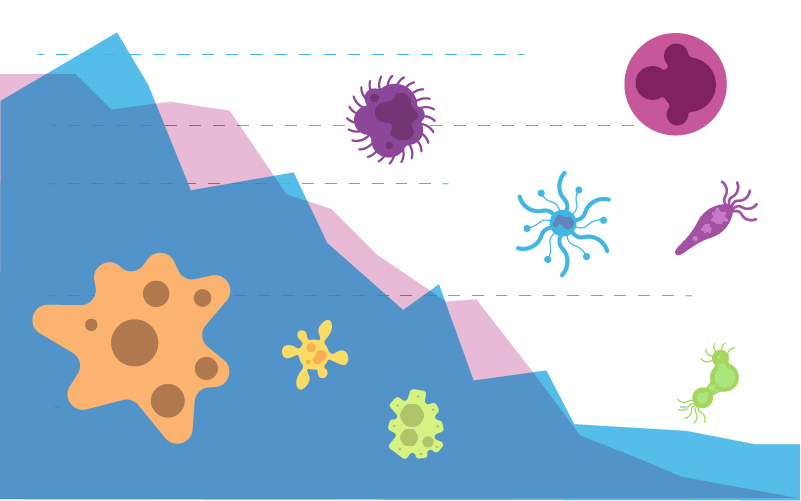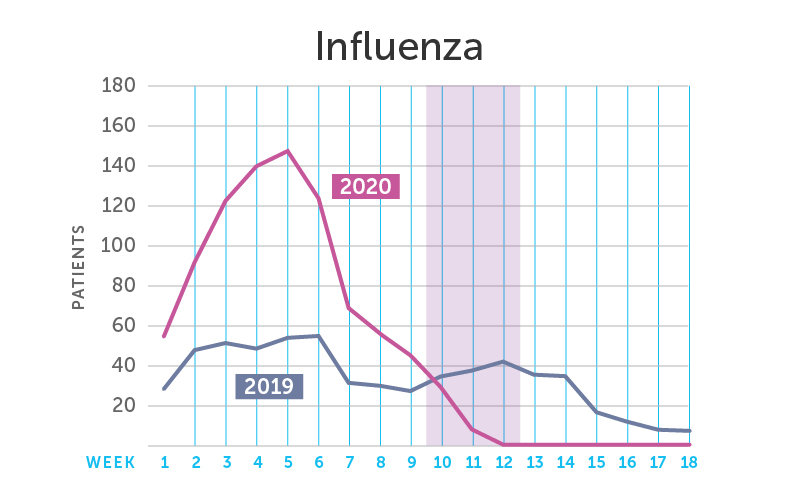Social distancing: Benefits beyond COVID-19

During COVID-19, social distancing has largely kept children away from school, daycare, and other contact with friends. But even though social distancing may be difficult and annoying, new research from Boston Children’s Hospital shows it has proven benefits beyond preventing COVID-19; it also helps stop the spread of other common childhood infections, like flu.
“Any parent knows that the benefits of childhood social interaction come with the risks of infectious diseases,” says study author Dr. Louis Vernacchio, a pediatrician at Longwood Pediatrics and researcher at Boston Children’s. “We wanted to see if social distancing and other infection control behaviors, like hand-washing, reduced common infections in children.”
Comparing 12 childhood diseases
The researchers reviewed the records of more than 375,000 children seen at the 80 pediatric medical practices associated with Boston Children’s in 2019 and 2020. They looked for the number of cases of 12 common childhood infections: acute otitis media (ear infection), bronchiolitis, common cold, croup, gastroenteritis, influenza, non-streptococcal pharyngitis, pneumonia, sinusitis, skin and soft tissue infections, streptococcal pharyngitis, and urinary tract infection (UTI).
With social distancing, all of the diseases showed a decline in 2020 compared with 2019.”
– Jonathan Hatoun
Their study compared the rates of infections during first 18 weeks of each year. The team especially focused on the number of infections after social distancing recommendations were announced in mid to late March 2020.
Three infections nearly disappeared
“With social distancing, all of the diseases showed a decline in 2020 compared with 2019,” says study author and pediatrician Dr. Jonathan Hatoun of Children’s Hospital Primary Care Center.
The biggest declines in infections were found in respiratory illnesses: flu (99.5 percent), croup (96.5 percent), and bronchiolitis (92.9 percent), which essentially disappeared in 2020 compared with 2019. The smallest drops were in skin and soft tissue infections and UTIs (35 percent for each).
“This makes sense since those last two are not really contagious or transmissible from child-to-child like the flu or a cold,” says Dr. Vernacchio.
Stopping flu in its tracks
The difference in the number of flu cases is especially interesting. The number of flu cases in kids in the 2019/2020 flu season was much larger than in 2018/2019 but the spread of flu ended abruptly with social distancing.

“The 2019/2020 flu season was shaping up to be terrible,” says Dr. Hatoun. “But social distancing shut it down almost immediately as soon as COVID-19 hit.”
Right now in Australia, where it is currently flu season, the number of flu cases is very low — another example how social distancing continues to stop the spread of other diseases.
Social distancing is the key
It makes sense that social distancing in 2020 decreased the number of infectious diseases in kids. “We were surprised, though, at the great extent to which these diseases can be slowed, or virtually eliminated, when kids are not close together,” says Dr. Hatoun.
The researchers know that social distancing explained the drop in the number of respiratory cases – not just that fewer kids went to the doctor during the pandemic. This is because the diseases that are more contagious — like the flu, cold, and croup — fell much more than UTIs and skin infections, which are not especially contagious from child to child.
Even partial measures will reduce numbers of sick kids
This study shows how much common childhood infections such as colds, ear infections, and the flu, can be reduced when extreme infection prevention measures are taken. But, in kids, this has to be balanced against the social and developmental importance of going to school.
“We are obviously not going to do severe social restriction in the future when COVID-19 is gone,” says Dr. Vernacchio. “But perhaps with partial measures, like hand hygiene and some physical spacing, we can probably reduce how many kids get sick in school and daycare.”
Get more answers about Boston Children’s response to COVID-19.
Related Posts :
-

New research paves the way to a better understanding of telomeres
Much the way the caps on the ends of a shoelace prevent it from fraying, telomeres — regions of repetitive DNA ...
-

AI-designed proteins open doors to new immunotherapies
Artificial intelligence (AI) is increasingly helping drive advances in science and medicine — including cellular signaling. In a recent study, published ...
-

Advancing global health: Using AI to detect heart disease in children
In many low- and middle-income countries, pediatric cardiologists can’t help children with congenital heart conditions because of a critical ...
-

Hope in sight for autosomal dominant optic atrophy (ADOA)
Autosomal dominant optic atrophy (ADOA), the most common genetic optic neuropathy, is an insidious disease. It often presents slowly during ...





